What a New Jewelry Exhibit Will Teach You About Mother Nature
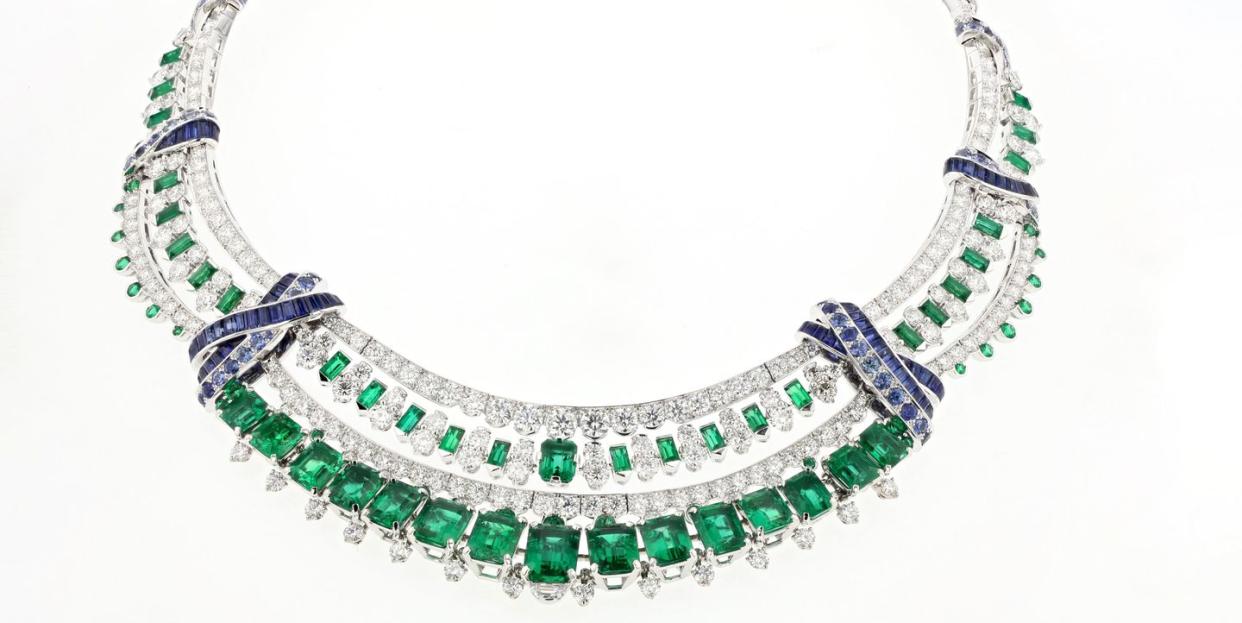
When you are looking at a malachite Van Cleef & Arpels butterfly brooch at the American Museum of Natural History in New York, sometimes all you can think about is what would happen if it came crashing down against the gallery floor. “Do you realize how much malachite they had to cut to get those wings as delicate as that?” a jewelry expert next to you might say.
Stone properties are major points of conversation in these halls (malachite is a 3 or 4 on the Moh’s Hardness scale, diamonds a 10), where visitors are surrounded by so many natural wonders—like a 3000-pound block of labradorite or two towering amethyst geodes or all those spodumene crystals. The stone remains supreme even when confronted with the virtuosity of design present in the jewel box of an exhibit, Garden of Green: Exquisite Jewelry from the Collection of Van Cleef & Arpels, opening June 10 (and on through January 2024).
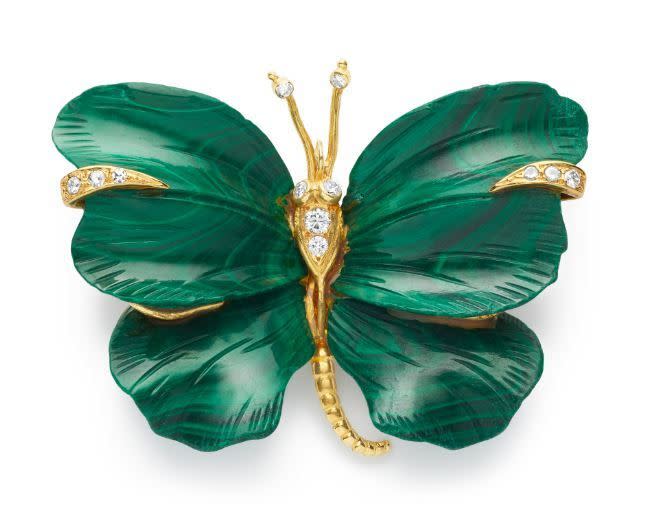
Visitors to the Melissa and Keith Meister Gallery in the Allison and Roberto Mignone Halls of Gems and Minerals (which re-opened after an extensive renovation in 2021 after a pandemic-induced delay) will marvel at the 44 pieces of green jewels—including emeralds, malachite, jade, and peridot—showcased in the vitrines, and will note that 32 of them will be on view in the U.S. for the first time. They will also learn of the lush variety of verdant stones available to Van Cleef’s master artisans. In addition to the green stones mentioned above, there are Van Cleef & Arpels designs crafted from chrysoprase and green chalcedony on exhibit.
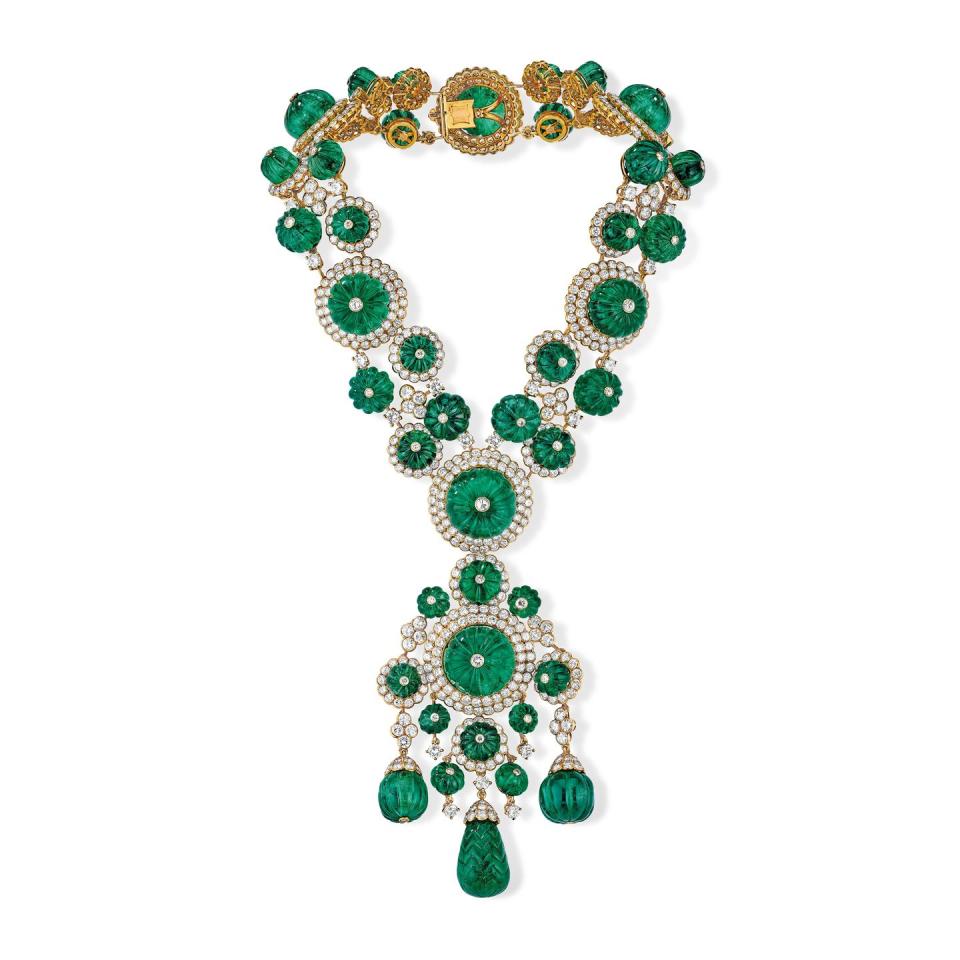
The show itself is organized by stone, and since we are right inside the Halls of Gems and Minerals, details about its properties and where each comes from and how it comes to be are highlighted in plaques in each window. The designs are incredible to witness, and the information about the stones they are made from make them even more so.
So yes, you can certainly go and stare at the carved Van Cleef emeralds on the pendant Prince Karim Aga Khan IV bought his wife in 1971 that converts into matching bracelets and a clip. And you might not be able to take your eyes off of the electric peridot of a drop necklace, or the bold malachite in the Van Cleef jumbo zodiac pendants. But isn’t it also fascinating to know the following, via George Harlow, curator emeritus of the museum’s Department of Earth and Planetary Science: “Green stones and minerals owe their unique colors and patterns to various causes—malachite from the copper in its chemical composition, and peridot from the minor quantity and ionic charge of iron in the stone—and each specimen in this exhibition is a beautiful example of the amazing products of natural earth processes.”
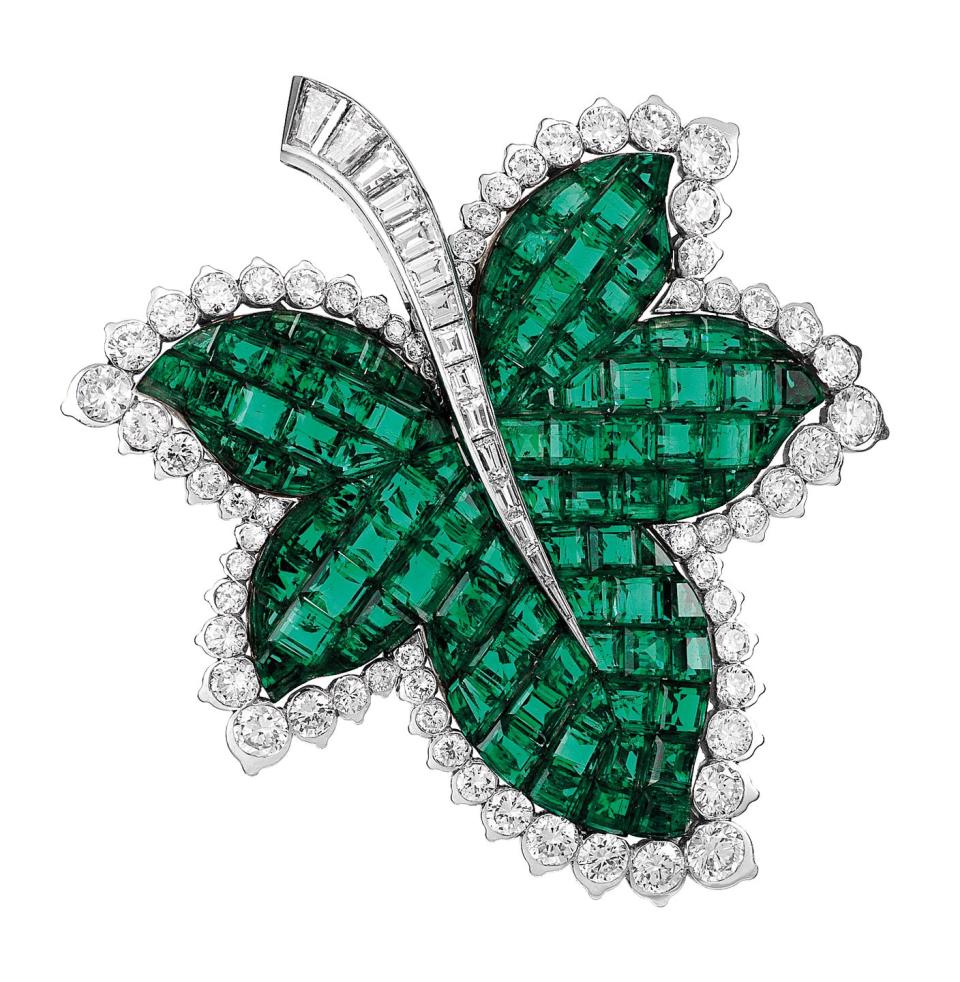
Process is what visitors are most impressed by in this hall, how stones are formed from within the earth and then rise above it, and are then cut and smoothed and faceted before being designed into jewels for personal adornment. That this all is a cycle that has been continuing for centuries is loud and clear here, perhaps more than anywhere else in the world.
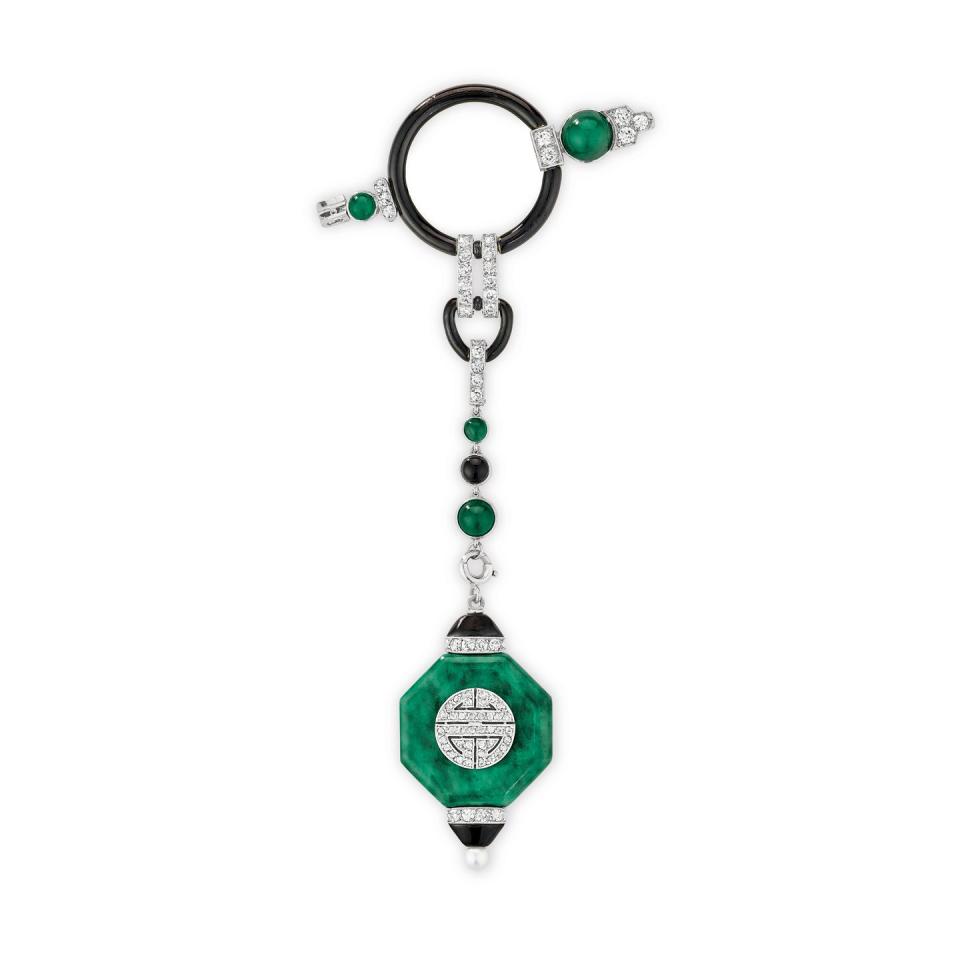
Outside the Garden of Green gallery the Patricia Emerald, a 632-carat crystal that was discovered in 1920 in the Chivor Mine in Colombia is on view as is a jadeite jade incense burner from China, and a behemoth beryl from the Bumpus Quarry in Maine; there is a piece from Morocco with pendants of aquamarine beryl (ca. 1750), and then hunks of minerals formed in hydrothermal environments.
It all makes the design of the Van Cleef pieces feel that much more miraculous—that these shards of the earth could, through human creativity and VCA craftsmanship, end up as a jade and onyx Art Deco lapel pin, that that hunk of green stone continues its life as a part of yours.
You Might Also Like

